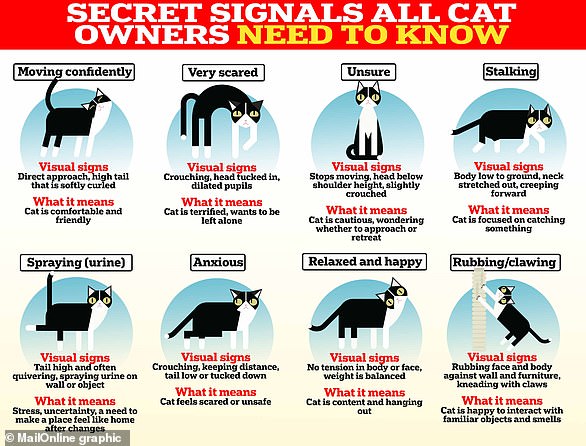Do YOU know how your cat is feline? Experts reveal what your kitty’s facial expressions really mean
If you have a cat, it may seem like you’ve developed a shared language with your pet, whether it’s a specific meow or slow blinking.
But do you really know how your cat feels?
A study this week found that cats have nearly 300 different facial expressions.
This includes 126 facial expressions that suggest they are feeling friendly, and 102 that indicate they are grumbling.
Here, MailOnline shows you how to tell if your cat is feeling happy, anxious or even unfriendly, based on their facial expressions and body movements.
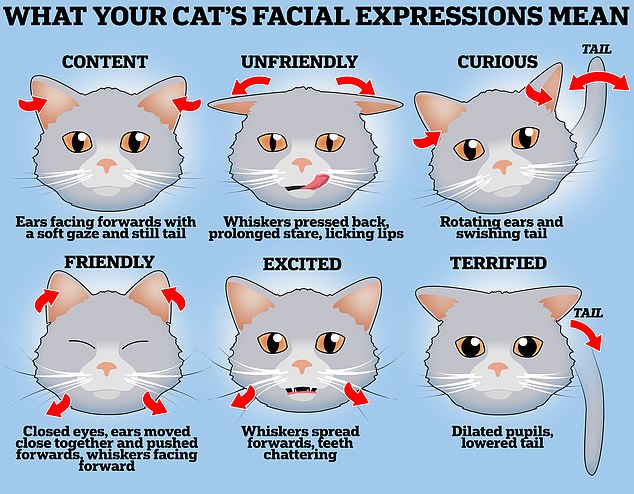
MailOnline shows how to tell whether your cat is feeling happy, anxious or even unfriendly based on facial expressions and body movements
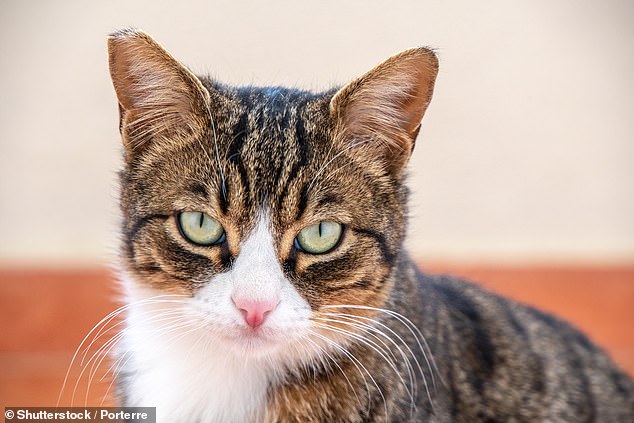
If your cat’s ears are pointed forward, with the tips pointing up, it means the cat is content. Chin also thinks that a soft, blinking look is a sign of peace
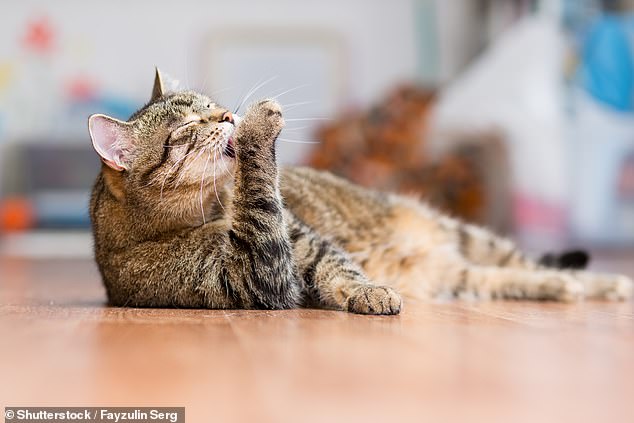
If your cat’s ears are flat and the tips point down or back, it indicates that your pet is anxious, says Chin. If the cat suddenly licks itself while doing something else, it may also be trying to calm down
Author Lili Chin’s book, Kitty Language, was released earlier this year and is described as an “illustrated guide to understanding your cat.”
In writing the book, Chin spoke to qualified “cat behaviorists” – experts who study the movements and mannerisms of cats – and asked them to explain how the animals communicate.
CONTENTS
Cats’ ears have 32 muscles each and are among the most expressive parts of their bodies, Chin explains in her book.
If they point forward, with the points pointing upwards, it means the cat is happy.
Chin also thinks that a soft, blinking gaze is a sign of peace, while an upright and relaxed tail is a sign of friendliness.
STRETCHED
If your cat’s ears are flat and the tips point down or back, it indicates that your pet is anxious, says Chin.
If the cat suddenly licks itself while doing something else, it may also be trying to calm down.
CURIOUS
Chin advises looking out for “radar ears,” when the ear openings turn in one direction and then change course.
This means that the cat is curious and searches the room to locate a particular sound.
Your cat’s tail can also provide important clues that he or she is curious.
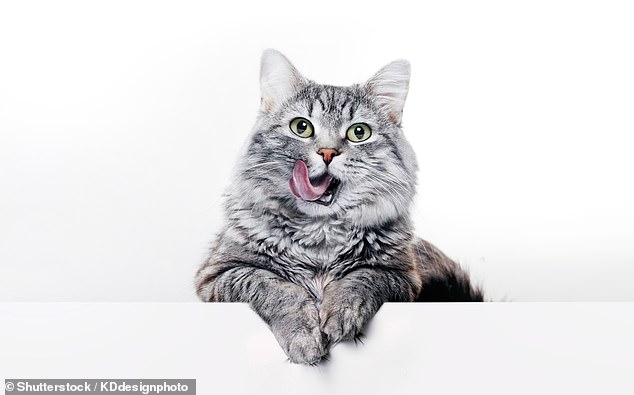
If your cat licks his lips or nose quickly and then swallows, he may feel uncomfortable, according to experts
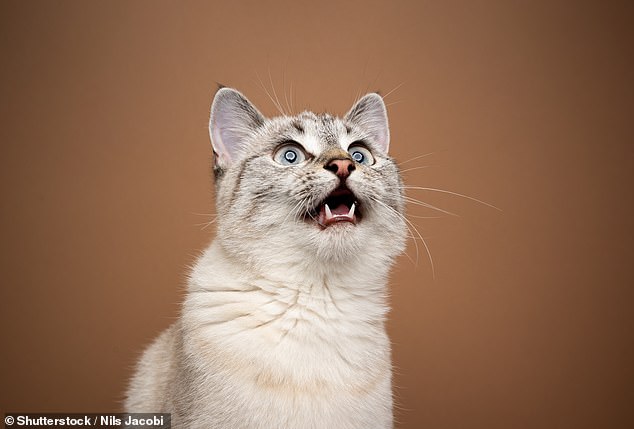
If the whiskers are spread forward and the cat is excited, you can assume they are receptive. Meanwhile, the chattering of their teeth indicates excited observation, Chin said
A brush of the tail means hello and a wave from side to side means the cat is fascinated by something.
The bigger the swish, the stronger the interest.
EXCITED
If the whiskers are spread forward and the cat is excited, you can assume they are receptive.
Meanwhile, the chattering of their teeth indicates excited observation, Chin said.
UNFRIENDLY
If the whiskers are pushed back, it means your cat wants you to stay away.
A prolonged look with your head held high is also a sign of threat.
In addition, if your cat licks his lips or nose quickly and then swallows, he may feel uncomfortable and want to relieve the tension. (If he licks his lips after eating, he’s just full.)
TERRIFIED
Dilated pupils? That could indicate fear, although Chin makes it clear that cat eyes are not 20/20.
“Cats see movement better than details,” she said.
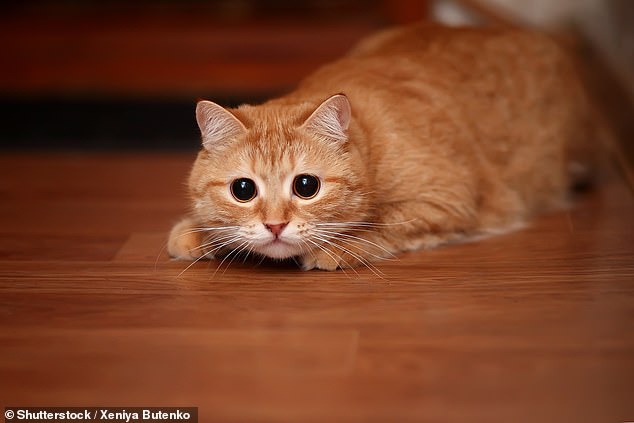
Dilated pupils? That could indicate fear, although Chin makes it clear that cat eyes are not 20/20
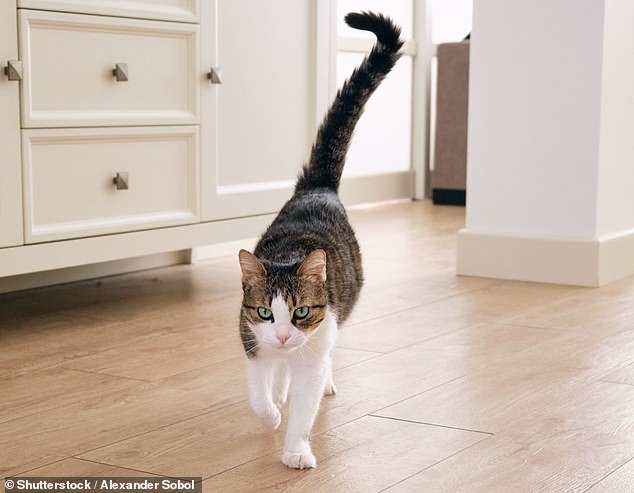
Your cat’s tail can also provide important clues that he or she is curious. A brush of the tail means hello and a wave from side to side means the cat is fascinated by something. The bigger the swish, the stronger the interest
“If yours looks like it’s staring at you without blinking, it may just be looking at movement in the room and not directly at you.”
In addition, the animal can be insecure if the tail is low and stiff: it crawls around and remains inconspicuous.
Dr. Brittany Florkiewicz, a researcher from Lyon College in Arkansas and senior author of the new study, added: ‘It’s good to look at a cat’s ears, eyes and whiskers to understand whether it’s feeling friendly.
“Their mouths provide a lot of information about the likelihood of a cat fight.”

